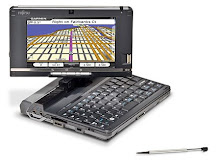
Pen plotters print by moving a pen across the surface of a piece of paper. This means that plotters are restricted to line art, rather than raster graphics as with other printers. Pen plotters can draw complex line art, including text, but do so very slowly because of the mechanical movement of the pens. Pen Plotters are incapable of creating a solid region of color; but can hatch an area by drawing a number of close, regular lines. When computer memory was very expensive, and processor power was very limited, this was often the fastest way to produce color high-resolution vector-based artwork, or very large drawings efficiently.
Traditionally, printers are primarily for printing text. This makes it fairly easy to control, simply sending the text to the printer is usually enough to generate a page of output. This is not the case of the line art on a plotter, where a number of printer control languages were created to send the more detailed commands like "lift pen from paper", "place pen on paper", or "draw a line from here to here". The two common ASCII-based plotter control languages are Hewlett-Packard's HPGL2 or Houston Instruments DMPL with commands such as "PA 3000, 2000; PD".
Programmers using FORTRAN or BASIC generally did not program these directly, but used software packages such as the Calcomp library, or device independent graphics packages such as Hewlett-Packard's AGL libraries or BASIC extensions or high end packages such as DISSPLA. These would establish scaling factors from world coordinates to device coordinates, and translating to the low level device commands. For example to plot X*X in HP 9830 BASIC, the program would be
Traditionally, printers are primarily for printing text. This makes it fairly easy to control, simply sending the text to the printer is usually enough to generate a page of output. This is not the case of the line art on a plotter, where a number of printer control languages were created to send the more detailed commands like "lift pen from paper", "place pen on paper", or "draw a line from here to here". The two common ASCII-based plotter control languages are Hewlett-Packard's HPGL2 or Houston Instruments DMPL with commands such as "PA 3000, 2000; PD".
Programmers using FORTRAN or BASIC generally did not program these directly, but used software packages such as the Calcomp library, or device independent graphics packages such as Hewlett-Packard's AGL libraries or BASIC extensions or high end packages such as DISSPLA. These would establish scaling factors from world coordinates to device coordinates, and translating to the low level device commands. For example to plot X*X in HP 9830 BASIC, the program would be

No comments:
Post a Comment